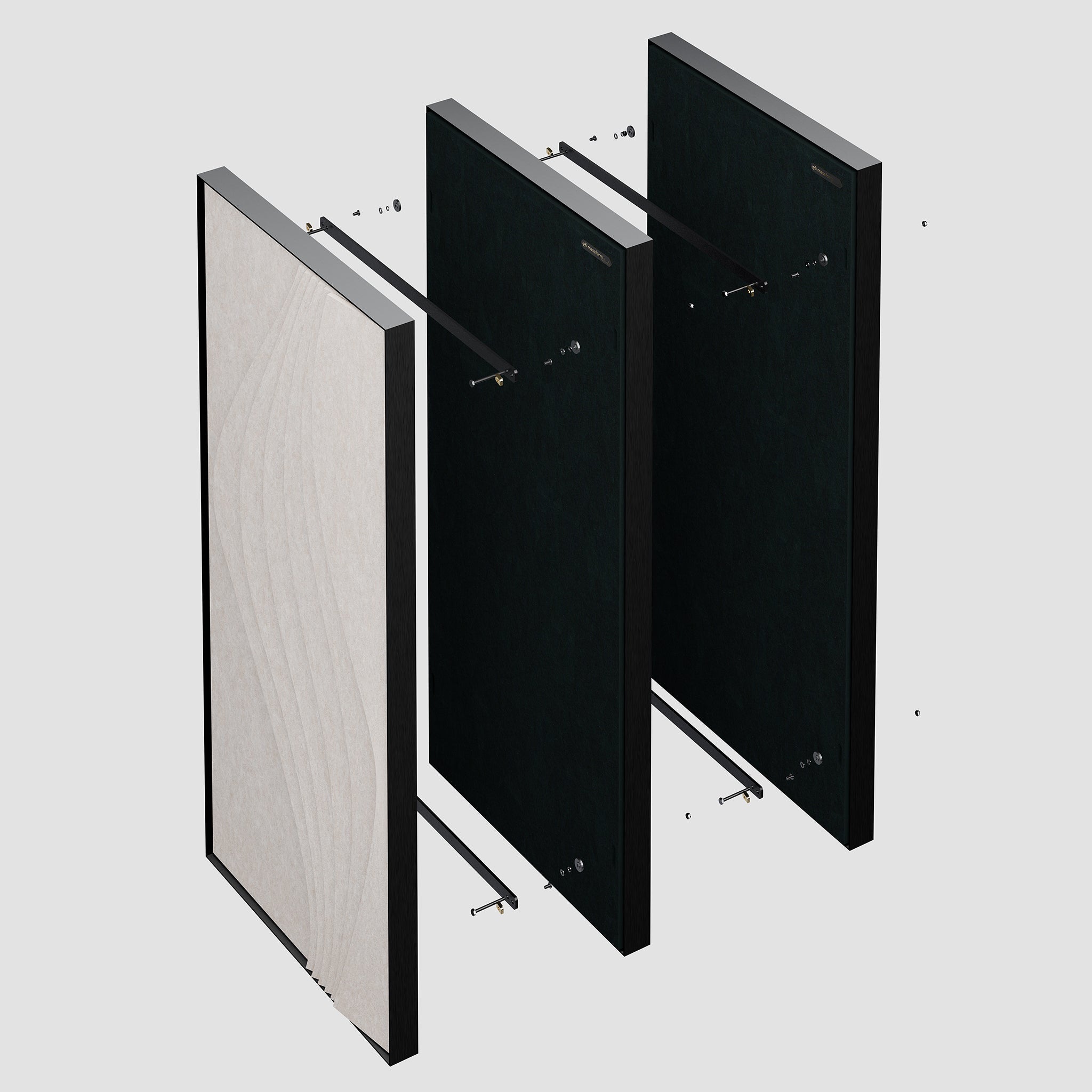Bass is where sound gets physical.
It moves the air, hits the body, and defines the energy of a space. But in untreated rooms, it also causes the most chaos: boomy corners, muddy mids, uneven playback.
When you think of acoustic testing, you probably imagine certified labs, precise measurements, and gold-standard charts.
But here’s the catch: those standards (ASTM C423 / ISO 354) mostly ignore the low end — the deep bass energy that actually shapes how a room feels.
That’s why we built our own modular bass trap system — to fill the gap that testing standards leave behind.
What Makes Bass Hard to Control?
- Low frequencies (20–250Hz) have long wavelengths — sometimes several meters
- These waves bounce between walls and corners, creating standing waves
- Result: some notes boom, others vanish, and your room lies to your ears
Why Labs Don’t Measure Real Bass
Most certified acoustic tests focus on the 100Hz–4kHz range, with NRC values based on mid-frequency averages.
The deep stuff — under 125Hz — is harder to measure, and often omitted or smoothed out.
But that’s exactly where most rooms struggle: bass build-up, muddy resonance, and standing waves that turn mixes into guesswork.
So if your panel claims a great NRC but doesn’t talk about bass... you're only getting half the picture.
How Massform’s Bass Traps Are Built Different
- Modular form: Stackable and reconfigurable to fit real spaces — scale up until you reach the absorption depth needed for your lowest target frequency.
- High-density PET core: Deep, broadband absorption that targets both lows and mids
- Stacked Behind the Surface: Our bass traps are modular inserts that disappear behind the panel — layered for depth, built for control, designed to stay invisible.
-
Install-friendly: Wall-mounted or corner-stacked — no framing required
What We Measured Instead
We tested in real rooms using:
- Calibrated UMIK-1 mic
- REW software
- Multiple mic positions
- Treated vs. untreated decay curves
- Focused especially on RT60 under 250Hz
With just 1 layer of our 2 inch (50mm) bass trap, we found consistent reduction of room decay from ~300ms to ~100ms in the sub-250Hz range. This is the range that makes rooms feel heavy, slow, or boomy. And our traps fix it.
Where It Goes in Your Room
- Corners — always start here
- Behind speakers — bass builds up early
- Stacked to fit your wall height — our modular design adapts
- Symmetry = better stereo image














Share:
Do Massform Panel Really Work? A Clear Answer for the Curious (and the Skeptical)
Start Smart: Where Acoustic Treatment Matters Most